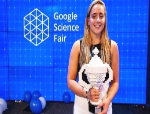0 148510 148518 148524 148528 148534 148536 148540 148546 148548 148554 148560 148564 148566 148570 148576 148578 148584 148588 148590 148594 148596 148600 148602 148604 148605 148606 148608 148609 148610 148612 148614 148618 148620 148624 148626 148630 148636 148638 148644 148648 148650 148654 148660 148666 148668 148674 148678 148680 148686 148690 148696 148704 151629

